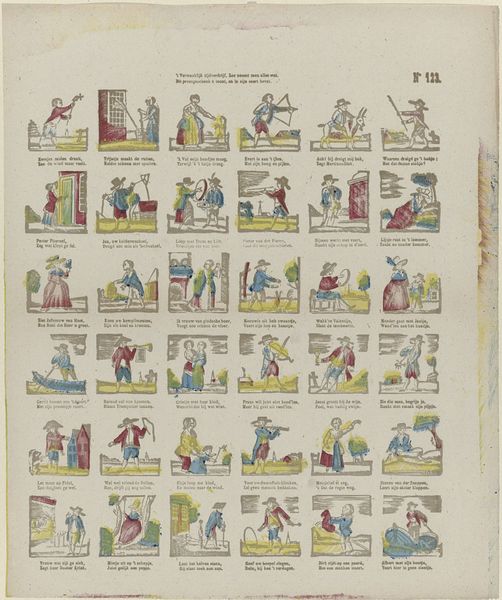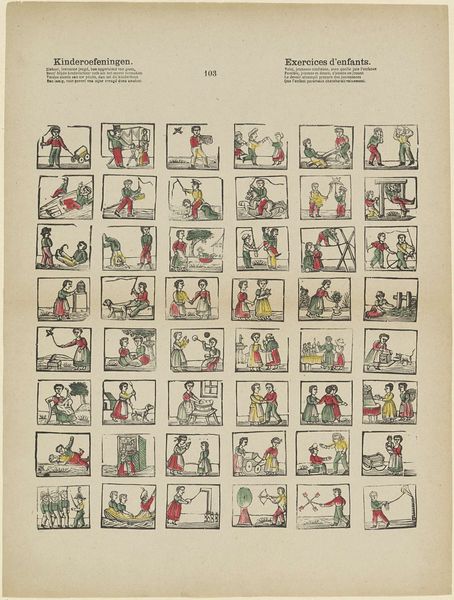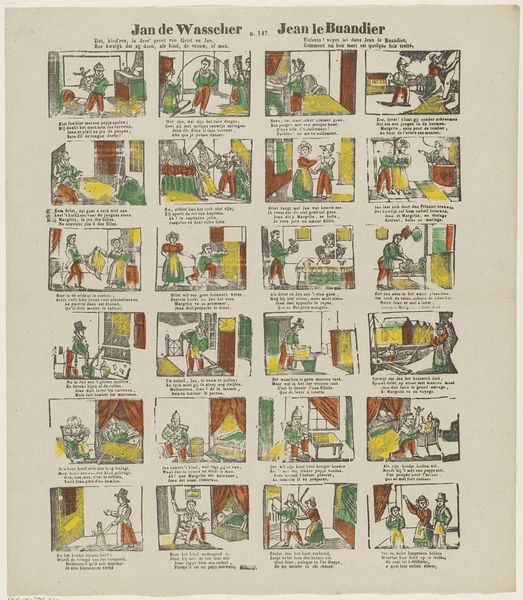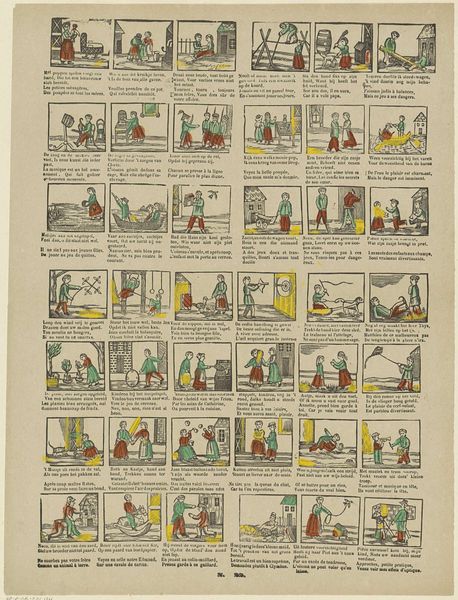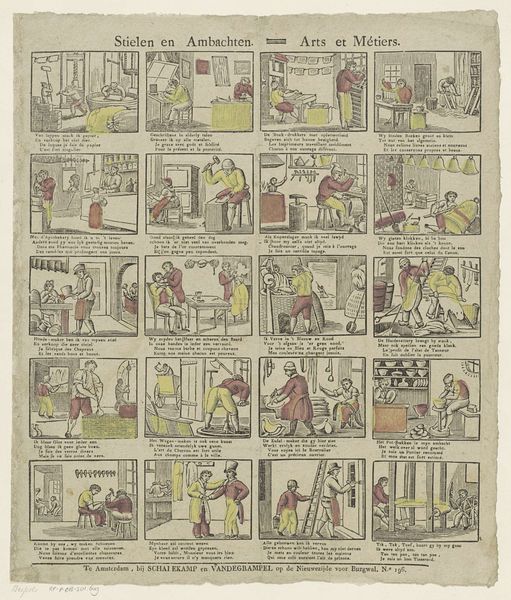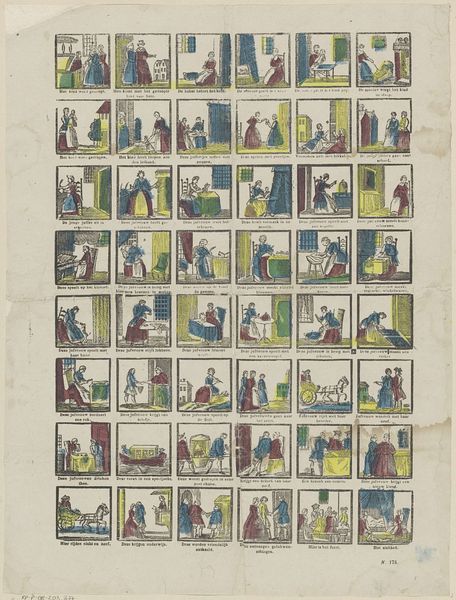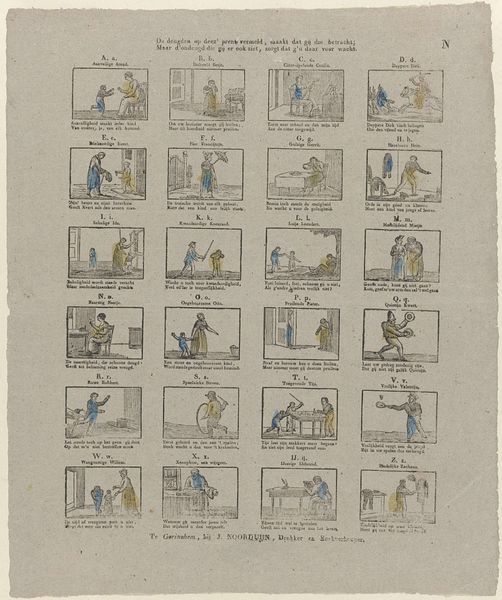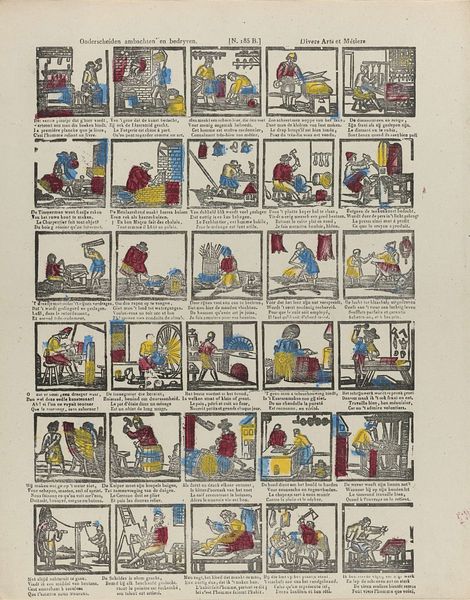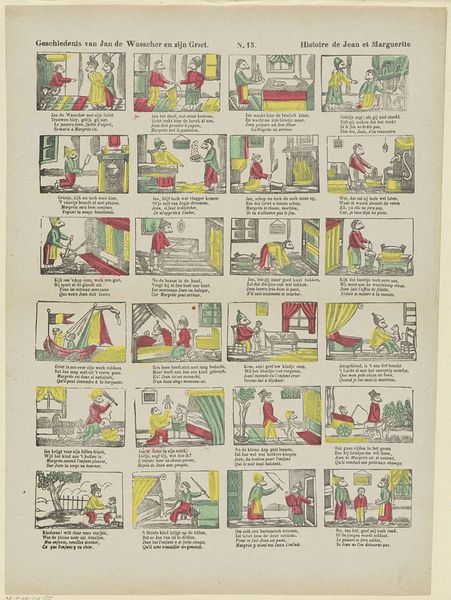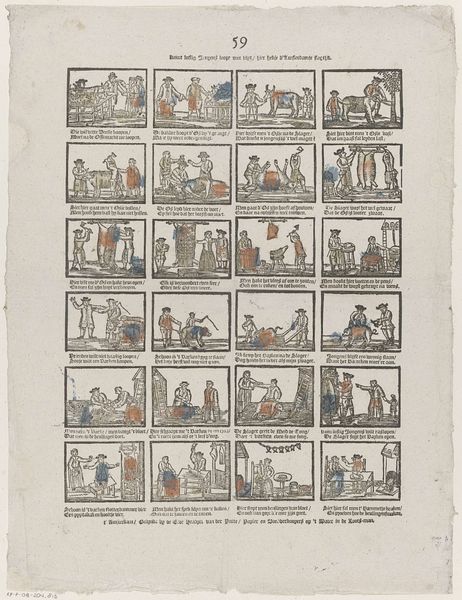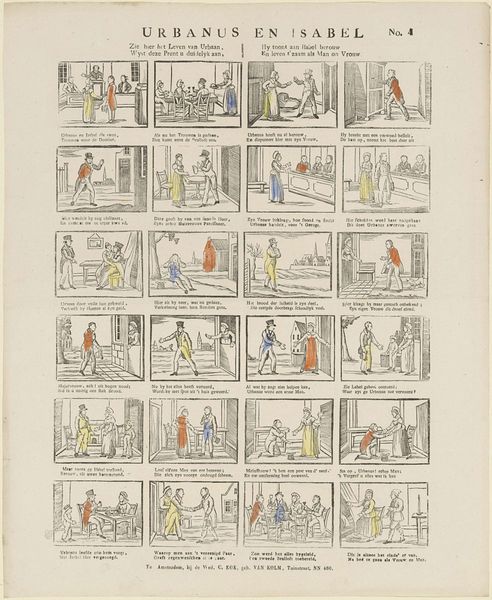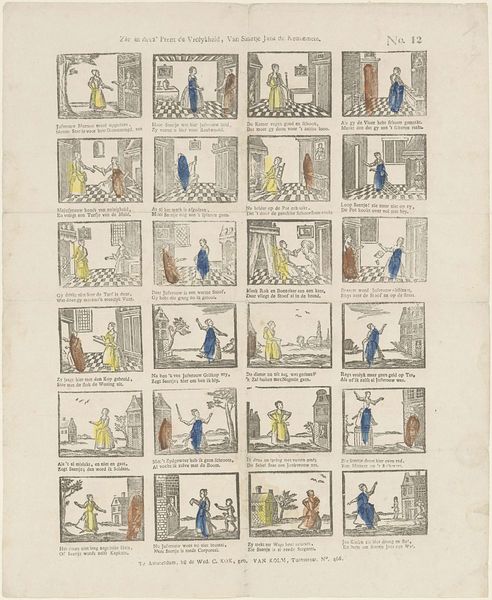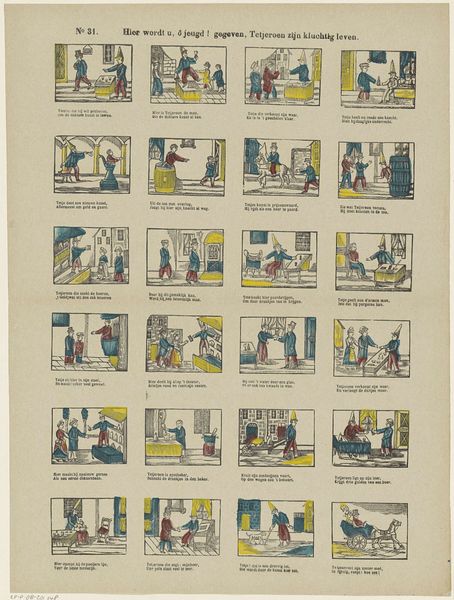
graphic-art, print, etching
#
graphic-art
#
narrative-art
#
comic strip
# print
#
etching
#
genre-painting
Dimensions: height 421 mm, width 282 mm
Copyright: Rijks Museum: Open Domain
Curator: At first glance, it resembles a page from a children's book, with these quaint vignettes laid out in neat rows. A charming, if somewhat naive, representation. Editor: Yes, charming, but beneath that lies something much deeper. This etching by Franciscus Antonius Beersmans, titled "Het leven van een vrouw" which translates to "A Woman's Life", made between 1866 and 1902, is much more than a series of illustrations. I read it as a critical social narrative presented in small sequential scenes, what is now commonly identified as a 'comic strip' artwork format. Curator: I agree. These scenes depict what appears to be archetypal imagery of a woman's expected roles and responsibilities through her life in what I read as late 19th-century society: courtship, marriage, childbirth, domestic duties, familial events. These all tie together, of course, using certain iconographic standards, where specific domestic objects stand for more than themselves. Editor: Such as? Curator: The cradle, repeated throughout, symbolizing motherhood and domesticity, as well as expectations and constraints placed upon women to remain within the private sphere. The clothing signifies societal expectation. Editor: Exactly. Each vignette serves as a symbolic representation of her expected journey. It seems deceptively light, but if we situate it in the context of 19th-century debates around women’s education and their role in public versus private life, a strong argument for social commentary becomes palpable. Each stage is represented by images that stand for a specific stage in a woman's life, so to read this comic strip format is to follow the stations of the 'life' itself, rather than of a woman with agency, perhaps reflecting some critique about gender roles. Curator: That makes me also wonder if the piece is making an implicit argument that women were reduced to this prescriptive set of roles at the time? The symbols may suggest it. A silent criticism of a constricted path. Editor: Exactly, each image acting as an expectation for a female life! Curator: I like that so much of it can be explored through how imagery conveys meaning through the time! Editor: Me too; it helps us engage with the work in many interesting and useful ways.
Comments
No comments
Be the first to comment and join the conversation on the ultimate creative platform.
